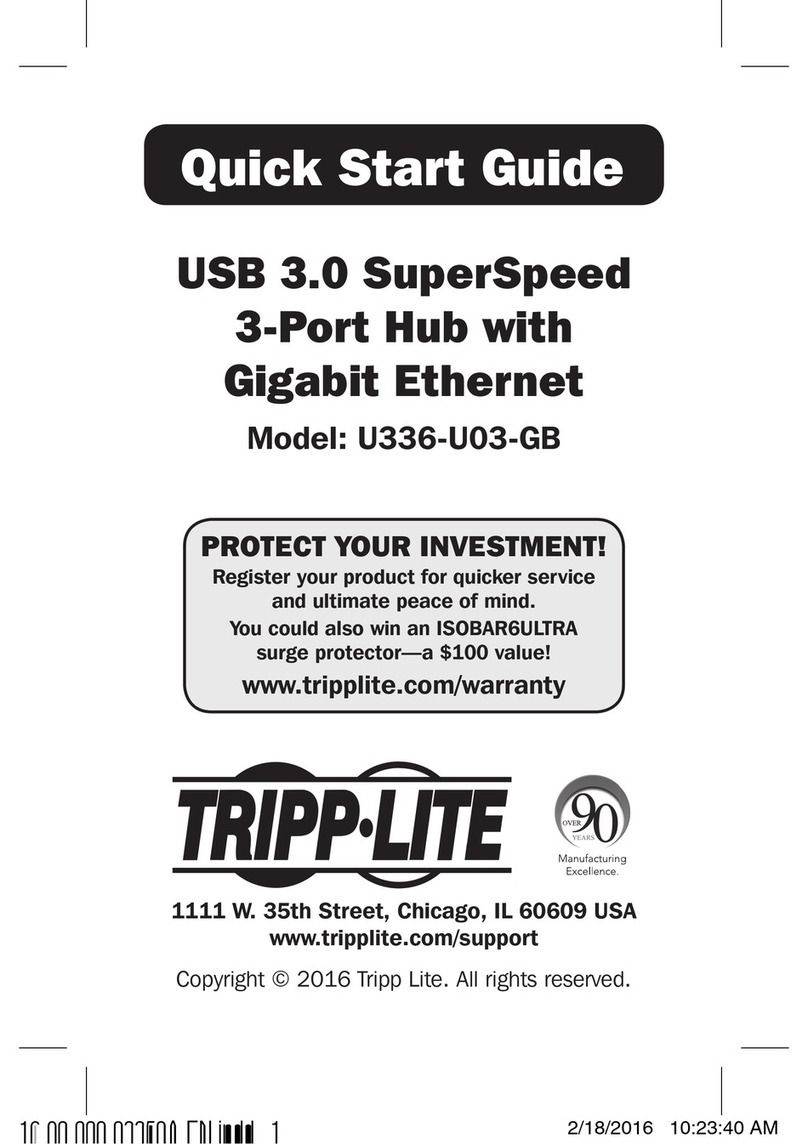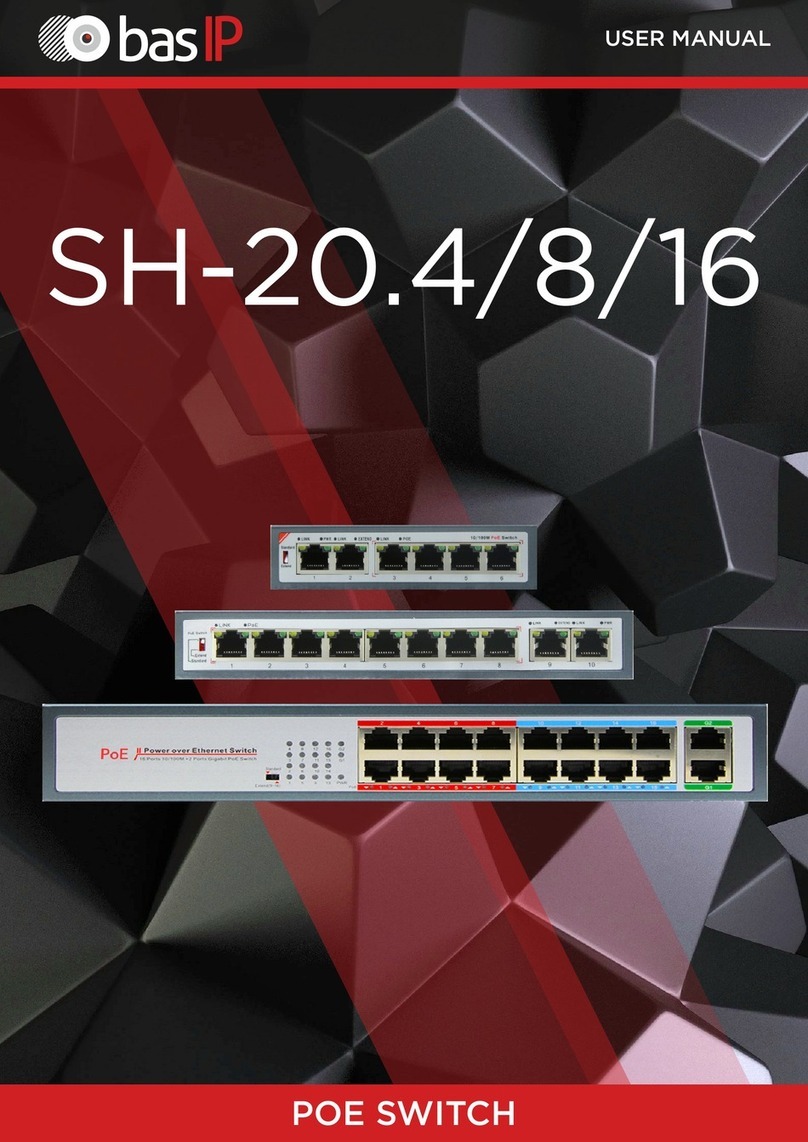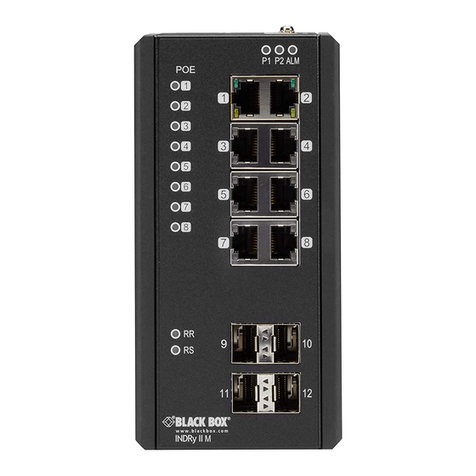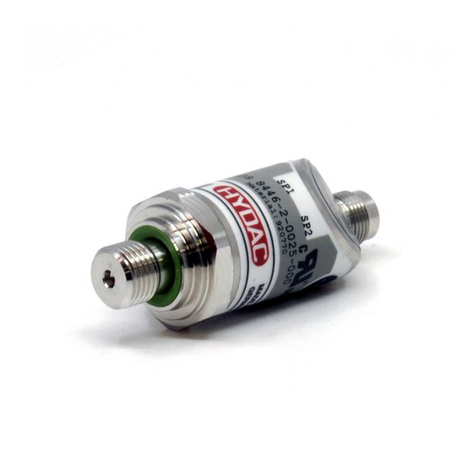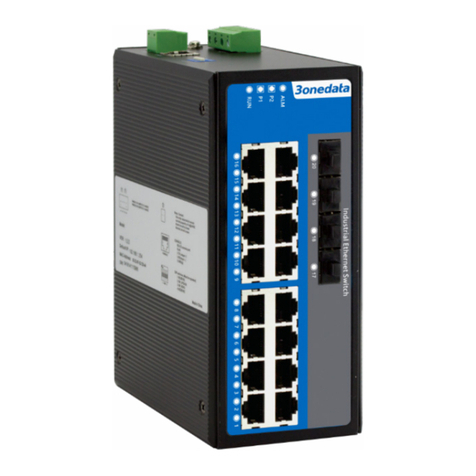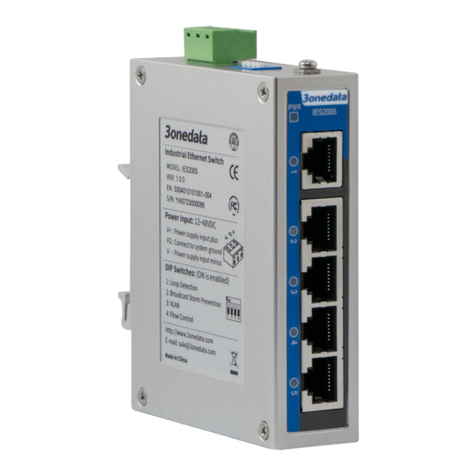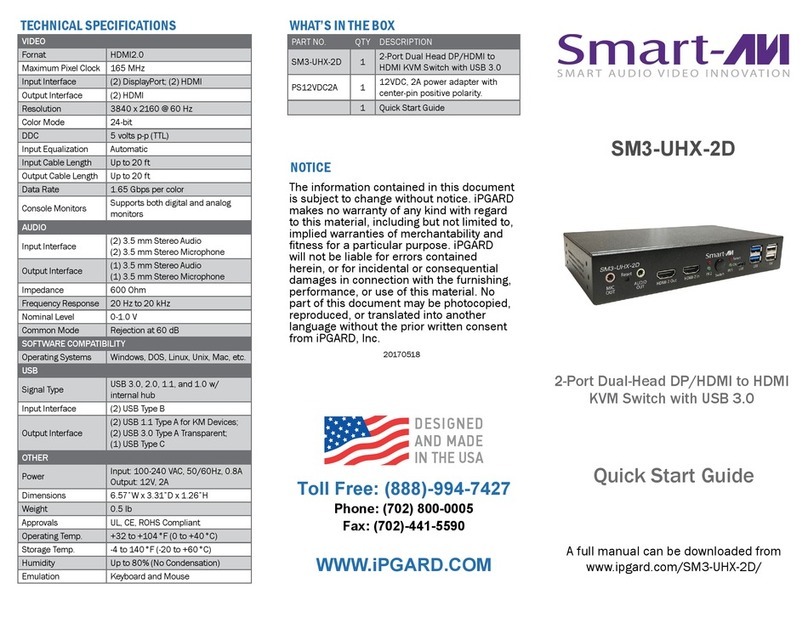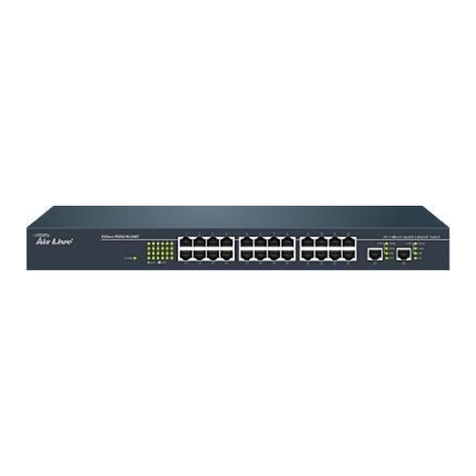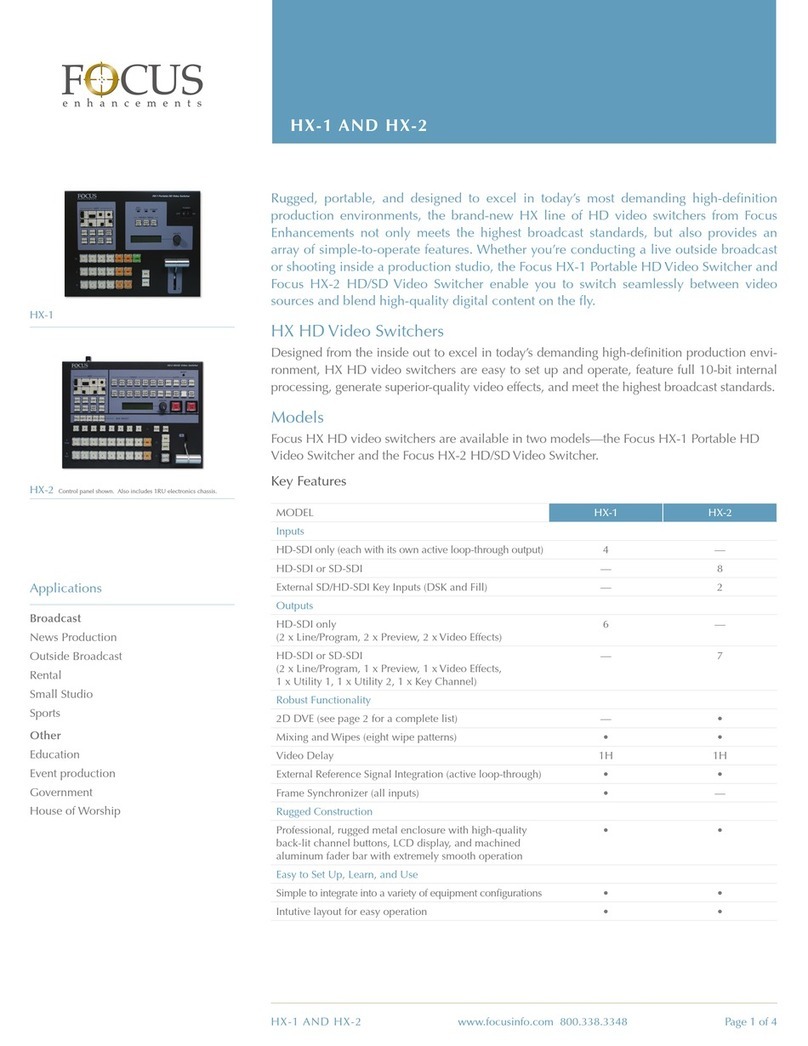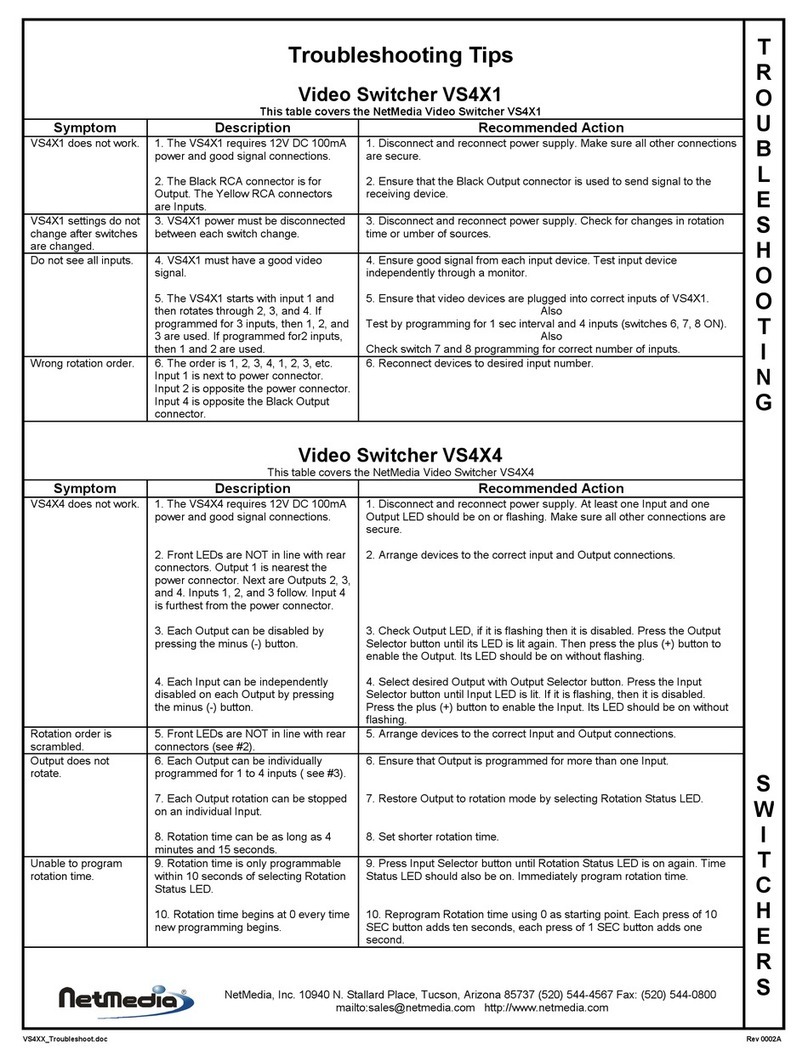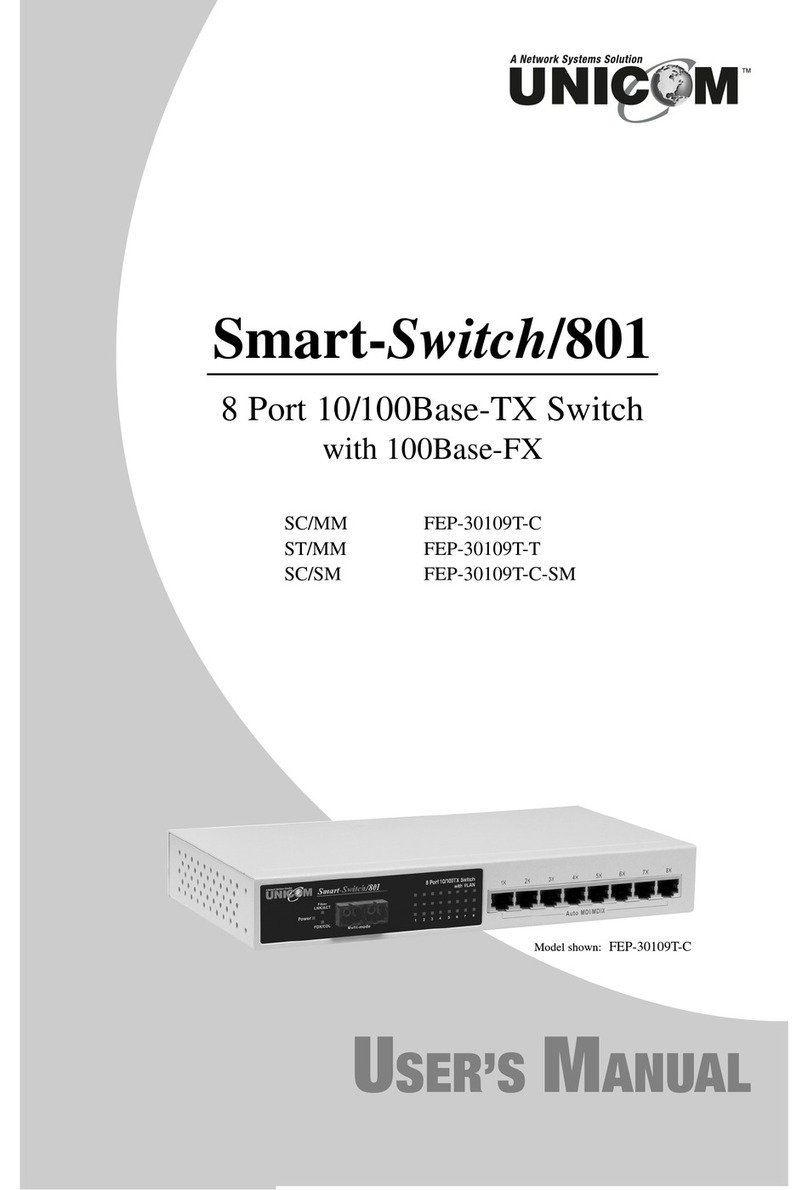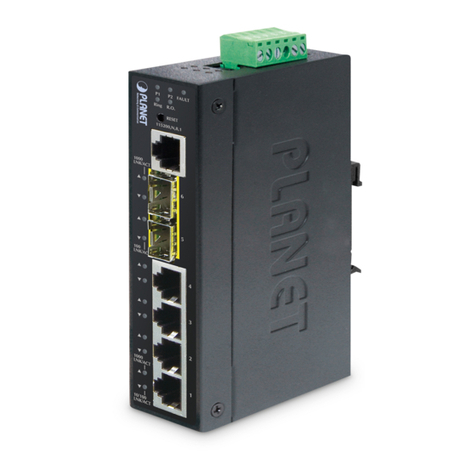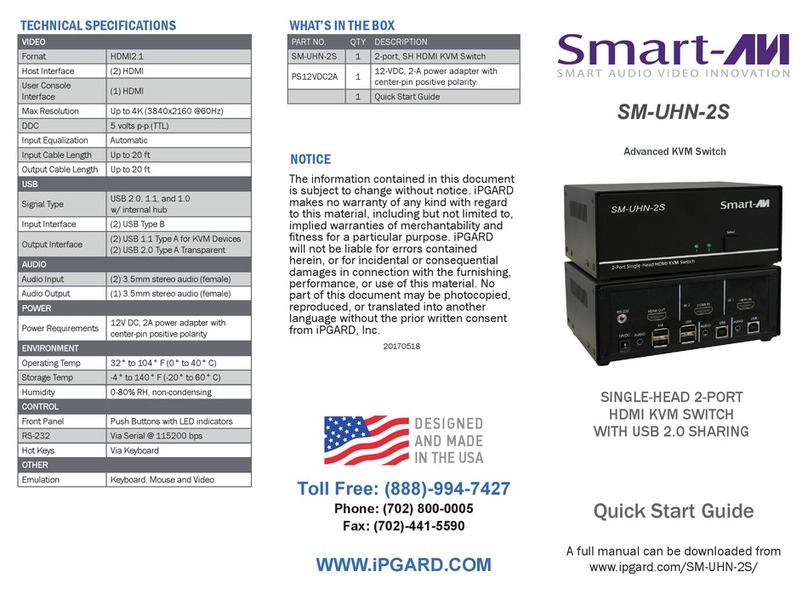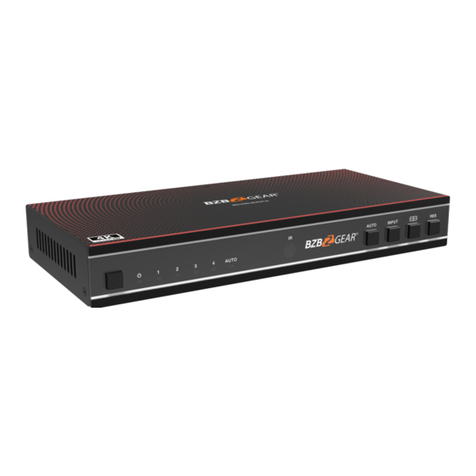Madge Networks CrossFire 8300 User manual

DOC-7092/1.0
CrossFireTM 8300 Switch Stacker
CrossFireTM 8301 Redundant Stacker Unit
Guide to Operation


CrossFireTM 8300 Switch Stacker
CrossFireTM 8301 Redundant Stacker Unit
Guide to Operation

ii
CrossFire 8300/8301 Stacker Guide to Operation, DOC-7092 v. 1.0
Trademarks
Madge and the Madge Logo are trademarks, and in some jurisdictions may be registered trademarks, of
Madge Networks or its affiliated companies.
ClearSight and CrossFire are trademarks, and in some jurisdictions may be registered trademarks, of
Olicom A/S or its affiliated companies.
Other trademarks appearing in this document are the property of their respective owners.
Copyright
Madge Networks reserves the right to modify the information given in this publication without prior
notice. The warranty terms and conditions applicable for your purchase of this product are shipped with
the product.
All rights reserved. No part of this publication may be reproduced, stored in a retrieval system, or
transmitted, in any form or by any means, electronic, mechanical, photocopying, recording or otherwise,
without the prior written permission of the publisher.
Publication: DOC-7092 v.1.0
Part number: 710001832
© Copyright 1999 Madge Networks.
The intellectual property within the product is proprietary to Madge and its licensors
FCC Compliance
This equipment has been tested and found to comply with the limits for a Class A digital device, pursuant
to Part 15 of the FCC Rules. These limits are designed to provide reasonable protection against harmful
interference when the equipment is operated in a commercial environment. This equipment generates,
uses and can radiate radio frequency energy and, if not installed and used in accordance with the
instruction manual, may cause harmful interference to radio communications. Operation of this
equipment in a residential area is likely to cause harmful interference in which case the user will be
required to correct the interference at his own expense.
Warning: This is a Class A product. In a domestic environment this product may cause radio
interference in which case the user may be required to take adequate measures.
This device complies with part 15 of the FCC Rules. Operation is subject to the following two
conditions: (1) This device may not cause harmful interference, and (2) this device must accept any
interference received, including interference that may cause undesired operation.
Declaration of Conformity
We
Madge Networks
Wexham Springs
Framewood Road
Wexham
Slough, SL3 6PJ
England
declare under our sole responsibility that the products
CrossFire 8300 Switch Stacker
CrossFire 8301 Redundant Stacker Unit
to which this declaration relates is in conformity with the following standards or other normative
documents

iii
CrossFire 8300/8301 Stacker Guide to Operation, DOC-7092 v. 1.0
EN50082-1
EN55022
EN60950 including amendments
EN60825-1
following the provisions of 89/336/EEC Directive and 73/23/EEC Directive.
Modifications
If the device is changed or modified without the express approval of Madge, the user may void his or
her authority to operate the equipment.
Safety Notices
➽Danger: To avoid shock hazard, do not connect or disconnect any cables or perform installation,
maintenance, or reconfiguring of the CrossFire 8300 Switch Stacker during an electrical storm.
➽Danger: To avoid the possibility of electrical shock, switch power off and unplug the power cord from
the outlet before detaching the power cord from the CrossFire 8300 Switch Stacker.
➽Danger: Do not open the CrossFire 8300 Switch Stacker. Dangerous voltage inside.
➽Danger: To avoid shock hazard the power cord must be connected to a properly wired and earthed
receptacle. Any equipment to which the CrossFire 8300 Switch Stacker will be attached must also be
connected to properly wired and earthed receptacles.
Caution:
Observe the following power cable considerations before you begin installation of the CrossFire 8300
Switch Stacker.
1. The socket outlet shall be installed near the equipment and shall be easily accessible.
2. To prevent electrical shock, the power cord set used must comply with national regulations.
2a. The female receptacle of the cord must meet CEE-22 requirements.
2b. The cord must be UL listed, CSA labelled, and consist of three conductors with a maximum
of 15 feet in length.
Type SVT or SJT cord sets shall be used for units which stand on a desk or table. Type SJT
cord sets shall be used for units which stand on floor.
2c. The male plug for units operating at 115 VAC shall consist of a parallel blade, grounding
type attachment plug rated 15 A, 125 VAC.
The male plug for units operating at 230 VAC shall consist of a tandem blade, grounding
type attachment plug rated 15 A, 250 VAC.
The male plug for units operating at 230 VAC (outside of the United States and Canada) shall
consist of a grounding type attachment plug rated 15 A, 250 VAC and have the appropriate
safety approvals for the country in which the equipment will be installed.
➽Caution: Support the CrossFire 8300 Switch Stacker while you are installing the unit to avoid dropping
it on the floor or any equipment beneath it in the rack. The CrossFire 8300 Switch Stacker unit weighs
approximately 8 kg (17.6 lbs).
➽Caution: The socket-outlet shall be installed near the equipment and shall be easily accessible.

iv
CrossFire 8300/8301 Stacker Guide to Operation, DOC-7092 v. 1.0
Table of Contents
1. Overview and Specifications 1
Overview . . . . . . . . . . . . . . . . . . . . . . . . . . . . . . 1
CrossFire 8301 Redundant Stacker Unit . . . . . . . . . . . 2
Features and Specifications . . . . . . . . . . . . . . . . . . . . 3
Features . . . . . . . . . . . . . . . . . . . . . . . . . . . . 3
Specifications . . . . . . . . . . . . . . . . . . . . . . . . . 4
2. Switch Stacker Operation 5
Switch Stacker: A Unique Concept . . . . . . . . . . . . . . . . 5
Stack Features. . . . . . . . . . . . . . . . . . . . . . . . . . . 6
Creating a Switch Stack . . . . . . . . . . . . . . . . . . . . . . 7
CrossFire 8300 Switch Stacker Description . . . . . . . . . . 7
Forming a Switch Stack . . . . . . . . . . . . . . . . . . . . 7
Inter-box Parameters . . . . . . . . . . . . . . . . . . . . . . . 9
Provider of Inter-box Parameters . . . . . . . . . . . . . . . 10
3. Preparing for Installation 13
Safety Recommendations . . . . . . . . . . . . . . . . . . . . . 13
Safety with Electricity . . . . . . . . . . . . . . . . . . . . . 13
Preventing Electrostatic Discharge Damage . . . . . . . . . 14
Site Requirements . . . . . . . . . . . . . . . . . . . . . . . . . 15
Environment . . . . . . . . . . . . . . . . . . . . . . . . . . 15
Chassis Accessibility . . . . . . . . . . . . . . . . . . . . . 15
Cooling and Airflow . . . . . . . . . . . . . . . . . . . . . . 15
Power . . . . . . . . . . . . . . . . . . . . . . . . . . . . . 15
Package Contents . . . . . . . . . . . . . . . . . . . . . . . . . 16
4. Installation 17
Mounting the Chassis . . . . . . . . . . . . . . . . . . . . . . . 17
Rack or Cabinet Mounting . . . . . . . . . . . . . . . . . . . 17
Table-Mounting . . . . . . . . . . . . . . . . . . . . . . . . 19
Cabling a Stack . . . . . . . . . . . . . . . . . . . . . . . . . . 20
Connecting Switches to the Switch Stacker . . . . . . . . . . 20
Checking the Installation. . . . . . . . . . . . . . . . . . . . . . 23
Applying Power . . . . . . . . . . . . . . . . . . . . . . . . 23
CrossFire 8300 Switch Stacker Control Panels . . . . . . . . . . 25
Front Panel . . . . . . . . . . . . . . . . . . . . . . . . . . 25
Back Panel. . . . . . . . . . . . . . . . . . . . . . . . . . . 26
CrossFire 8300 Switch Stacker Chassis Description . . . . . 26
CrossFire 8301 Redundant Stacker Unit . . . . . . . . . . . . . 27
CrossFire 8301 Unit Installation . . . . . . . . . . . . . . . . 27

v
CrossFire 8300/8301 Stacker Guide to Operation, DOC-7092 v. 1.0
CrossFire 8301 Unit Operation . . . . . . . . . . . . . . . . 28
Automatic Switch-Over from a Switch . . . . . . . . . . . . 29
Manual Switch-Overs. . . . . . . . . . . . . . . . . . . . . 29
Switch-Over Impact on Traffic . . . . . . . . . . . . . . . . 29
Installing a CrossFire 8630 Stacker Link Module . . . . . . . . 31
Installing the CrossFire 8630 Stacker Link Module . . . . . 31
CrossFire 8630 Stacker Link Module Cables . . . . . . . . 32
5. Accessing Switch Management 33
Overview . . . . . . . . . . . . . . . . . . . . . . . . . . . . . 33
Connecting the Console . . . . . . . . . . . . . . . . . . . . . 34
Communication Problems . . . . . . . . . . . . . . . . . . . . 37
Diagnostic Screen . . . . . . . . . . . . . . . . . . . . . . . . 38
6. Switch Configuration 41
General Guidelines . . . . . . . . . . . . . . . . . . . . . . . . 41
Navigating within the Menus . . . . . . . . . . . . . . . . . 42
Main Menu Screen . . . . . . . . . . . . . . . . . . . . . . . . 43
Configuration Menu . . . . . . . . . . . . . . . . . . . . . . . 44
Switch Configuration Screen . . . . . . . . . . . . . . . . . . . 45
Stack Configuration Screen . . . . . . . . . . . . . . . . . 48
7. Madge Technical Support 51
Appendix A. Abbreviations 53

vi
CrossFire 8300/8301 Stacker Guide to Operation, DOC-7092 v. 1.0
List of Figures
Figure 1. Front View of the CrossFire 8300 Switch Stacker . . . . . . 1
Figure 2. Exposing the Rack Mounting Brackets . . . . . . . . . . . 18
Figure 3. Mounting the Switch Stacker in a Rack or Cabinet . . . . . 18
Figure 4. Connecting the Stack Port Cable to Port 1 on the
Switch Stacker . . . . . . . . . . . . . . . . . . . . . . . . 20
Figure 5. Connecting the Stack Port Cable to the Stack Port on
a Switch . . . . . . . . . . . . . . . . . . . . . . . . . . 21
Figure 6. Back Panel View of the Switch Stacker Cabled to Eight
Switches . . . . . . . . . . . . . . . . . . . . . . . . . . 22
Figure 7. The AC Connector for the Primary Power Supply Unit at the
Right on the CrossFire 8300 Back Panel . . . . . . . . . . 23
Figure 8. View of CrossFire 8300 with a CrossFire 8301 Module
in the Left (Primary) Position . . . . . . . . . . . . . . . . 27
Figure 9. Inserting a Secondary Unit into the
CrossFire 8300 Chassis . . . . . . . . . . . . . . . . . . 28
Figure 10. Inserting a CrossFire 8630 Stacker Link Module . . . . . . 31
Figure 11. View of the Management Console Connection . . . . . . . 34
List of Tables
Table 1. CrossFire 8300 Switch Stacker Specifications . . . . . . . . 4
Table 2. Front Panel Switch . . . . . . . . . . . . . . . . . . . . . 25
Table 3. Front Panel LEDs . . . . . . . . . . . . . . . . . . . . . . . 25
Table 4. Back Panel Connectors . . . . . . . . . . . . . . . . . . . . 26
Table 5. Back Panel LEDs . . . . . . . . . . . . . . . . . . . . . . . 26
Table 6. Default Console Configuration Settings . . . . . . . . . . . 35

vii
CrossFire 8300/8301 Stacker Guide to Operation, DOC-7092 v. 1.0
About this Manual
This manual is intended for network technicians familiar with the installation and
operation of networking equipment. It contains information on how to install and
operate the CrossFire 8300 Switch Stacker and the CrossFire 8301 Redundant
Stacker Unit.
This manual contains the following chapters and appendixes:
Chapter 1, “Overview and Specifications”, introduces the CrossFire 8300
Switch Stacker and provides a list of features and specifications.
Chapter 2, “Switch Stacker Operation”, describes the switch stacker operation,
provides a list of stack features, explains how a stack is formed and how the stack
selects a set of shared inter-box parameters.
Chapter 3, “Preparing for Installation”, includes safety recommendations, site
requirements, and instructions for unpacking and inspecting the CrossFire 8300
Switch Stacker.
Chapter 4, “Installation”, describes how to mount the CrossFire 8300 Switch
Stacker in a rack or cabinet or on a desktop. The chapter also includes instructions
for cabling the stack and checking the installation. Moreover, the chapter gives
information on how to install and use CrossFire 8301 Redundant Stacker Unit.
Chapter 5, “Accessing Switch Management”, explains how to create a direct
console connection to the switch or stack using a PC or modem. The chapter
includes modem settings and troubleshooting hints.
Chapter 6, “Switch Configuration”, explains how to work with console menus
and screens and how to view and edit switch and stack information.
Chapter 7, “Madge Technical Support”, contains support information.
Appendix A, “Abbreviations”, lists the abbreviations used in this manual as well
as other commonly used networking abbreviations.
❏

viii
CrossFire 8300/8301 Stacker Guide to Operation, DOC-7092 v. 1.0

1
CrossFire 8300/8301 Stacker Guide to Operation, DOC-7092 v. 1.0 1. Overview and Specifications
1. Overview and Specifications
This chapter provides an overview of the CrossFire 8300 Switch Stacker and
related CrossFire equipment. You will also find a list of specifications for the
CrossFire 8300 Switch Stacker.
Overview
To take full advantage of the network switching architecture, the switched network
must be scalable. In a scalable network you can increase the number of switch ports
on demand. Moreover, each switch must be extendable through the backplane in
order to maintain the high aggregate bandwidth between all switch ports. Switches
meeting these demands are stackable switches.
The stackable network equipment in the CrossFire product family provides the
basis for flexible and scalable network solutions. The CrossFire products include
equipment for stacking two to eight switches, as well as a wide range of expansion
modules that provide extra ports or attachments to existing networking equipment.
This guide describes how to install and use the CrossFire 8300 Switch Stacker, a
dedicated switch stacker unit that allows you to connect up to eight switches. Also
described is the CrossFire 8301 Redundant Stacker Unit, that can be installed in the
CrossFire 8300 Switch Stacker, providing increased network reliability.
Figure 1. Front View of the CrossFire 8300 Switch Stacker

2
CrossFire 8300/8301 Stacker Guide to Operation, DOC-7092 v. 1.0 1. Overview and Specifications
CrossFire 8301 Redundant Stacker Unit
The standard configuration of the CrossFire 8300 Switch Stacker consists of the
CrossFire 8300 chassis itself and one CrossFire 8301 Redundant Stacker Unit.
The CrossFire 8301 Unit includes a fan, power supply, control LEDs, and complete
logic circuitry. The CrossFire 8300 Switch Stacker only needs one CrossFire 8301
Unit to operate, but has another slot available for a second unit. If two units are
used, CrossFire 8300 runs with an online (primary) unit installed in the left slot and
an offline (secondary) unit installed in the right slot. If the primary unit should fail,
operation is switched to the secondary unit by automatic logic control. The units
can be also be switched manually using the ACTIVATE push button on the front
panel.

3
CrossFire 8300/8301 Stacker Guide to Operation, DOC-7092 v. 1.0 1. Overview and Specifications
Features and Specifications
This section lists the features and specifications for the CrossFire 8300 Switch
Stacker.
Features
The CrossFire 8300 Switch Stacker has the following features:
•Eight I/O stack ports using 50-pin SCSI-2 type connectors (one per port)
•280 Mbps per port (full-duplex)
•1.12 Gbps total capacity
•The ability to route packets between switches
•Round-robin output port arbitration
•Each port operates independently and in parallel (except for multicast)
•Replicates multicast packets
•No processor. Managed by the attached CrossFire 8600 Series Switches or
CrossFire 8730 Switches.
•Optional redundant hot-swappable units
•Front access to field-replaceable units

4
CrossFire 8300/8301 Stacker Guide to Operation, DOC-7092 v. 1.0 1. Overview and Specifications
Specifications
See the following table for the CrossFire 8300 Switch Stacker specifications.
❏
Specification Value
Rack mount 19”rack mount (hardware included) 2 U
Dimensions Width: 43 cm (17”)
Rack mounted width: 48.4 cm (19”)
Depth: 40 cm (15.74”)
Height: 8.76 cm (3.45”)
Power 100 to 240 VAC autosensing.
Frequency 50 to 60 Hz
AC current rating 1.3 A @ 100 VAC; 0.6 A @ 240 VAC
Operating temperature
Nonoperating temperature
10 to 40°C (50 to 104°F)
–10 to 70°C (13 to 158°F)
Operating humidity
Nonoperating humidity
8 to 80% (noncondensing)
8 to 95% (noncondensing)
Electromagnetic compatibility
immunity
EN 50082-1
EN 61000-3-2
EN 61000-3-3
Electromagnetic compatibility
emission
FCC part 15, subpart B, Class A
EN55022 Class A
CISPR 22 Class A
Safety IEC 950
UL1950
CSA C22.2 No. 950
EN60950
Table 1. CrossFire 8300 Switch Stacker Specifications

5
CrossFire 8300/8301 Stacker Guide to Operation, DOC-7092 v. 1.0 2. Switch Stacker Operation
2. Switch Stacker Operation
This chapter explains how the switch stacker equipment improves network
performance.
Switch Stacker: A Unique Concept
Any of the CrossFire 8600 Series Switches as well as the CrossFire 8730 Switches
can be stacked together. The switches in the stack combine to form a single unit.
You can stack two to eight switches and manage them as a single entity. All of the
switches in the stack must, however, run the same switch software version.
There are two ways of configuring the switch—as a single stand-alone unit or as a
logical combination of up to eight units. This logical combination of units is called
a switch stack.
A switch stack can be created in three different ways. The simplest configuration is
a back-to-back stack, in which two switches are connected directly using the
CrossFire 8630 Stacker Link Module and a stacker link cable.
You can also connect up to five switches by using the CrossFire 8635 Internal
Stacker Module. You install this module in one of the switches in the stack, and
then you connect the other switches to it using the CrossFire 8630 Stacker Link
Module and cables.
A stack can also consist of up to eight switches, connected by the CrossFire 8300
Switch Stacker. In this case, you connect each switch in the stack to the switch
stacker using CrossFire 8630 Stacker Link Modules and cables.
When a switch is turned on, it runs a set of self-test diagnostics. After the
diagnostics, the switch runs a stack discovery mode. The discovery mode is used to
sense if the switch is cabled to other switches or to the CrossFire 8300 Switch
Stacker. If the switch discovers other switches, a stack is formed automatically. If
no other switches are detected during the stack discovery mode, the switch starts
operating as a stand-alone unit.
You will not need any special tools, extra software, or expensive equipment to form
a stack of switches. See Chapter 4, “Installation”for details on how to connect
the stack equipment.

6
CrossFire 8300/8301 Stacker Guide to Operation, DOC-7092 v. 1.0 2. Switch Stacker Operation
Stack Features
•Single image management for the entire stack (less devices to manage)
•Management applications represent the stack as a single device
—Simple GUI management
•Single SNMP image for the entire stack
—Easier to customize SNMP applications
•Distributed intelligence between the units of the stack
—Shared learning
—Shared management information
•Hot-swapping of stack units
—If a unit should fail, the other units continue operating as a stack.
—Switches form or reform into the stack.

7
CrossFire 8300/8301 Stacker Guide to Operation, DOC-7092 v. 1.0 2. Switch Stacker Operation
Creating a Switch Stack
You can create a stack of up to eight switches using the CrossFire 8300 Switch
Stacker. The following sections describe how this stack is formed.
CrossFire 8300 Switch Stacker Description
The CrossFire 8300 Switch Stacker is an eight-port switch matrix interface, that can
connect up to eight CrossFire 8600 Series Switches and/or CrossFire 8730
Switches. Each switch will discover whether it is connected to a switch stacker unit
and whether there are other switches connected to the switch stacker. The
connected switches and the switch stacker will combine logically to form a stack.
The stacker itself, as well as any of the stacked switches, can be either on or off
when you connect or disconnect a switch in the stack. A proprietary shielded cable,
one meter in length, with 50-pin SCSI-2 type connectors is used to connect the
stacker equipment. The cable has crossover wiring—either end can connect to the
switch stacker or to the switches. The cable is plugged directly into a stack port I/
O connector on the back of the CrossFire 8300 Switch Stacker. The other end is
plugged into the CrossFire 8630 Stacker Link Module that is installed in the
expansion slot on the back panel of the switch.
For a description of the features and physical specifications of the CrossFire 8300
Switch Stacker, see Chapter 1, “Overview and Specifications”. For details on the
installation of the CrossFire 8300 Switch Stacker, see Chapter 4, “Installation”.
Forming a Switch Stack
When you turn on the switches, they run a set of self-diagnostics. After the
diagnostics, the switches run a stack discovery mode. During this mode, if two or
more switches are connected to a CrossFire 8300 Switch Stacker, the switches will
sense the connection and combine logically to create a stack configuration.
As soon as the stack discovery mode has finished, two things happen:
1. Each switch is assigned a box number.
The box number is determined by the port number on the switch stacker. For
example, the switch that is plugged into port 3 on the CrossFire 8300 Switch
Stacker receives the box number 3. The box number remains the same for the
switch as long as it is plugged into the same port. If a switch is connected to
another port, the box number for that switch will change to correspond to the
new port number.
2. All of the switches in the stack are set to share some of the configuration
information.

8
CrossFire 8300/8301 Stacker Guide to Operation, DOC-7092 v. 1.0 2. Switch Stacker Operation
The parameters that must share values on all of the switches in the stack are the
inter-box parameters (listed on page 9). One of the boxes in the stack is
assigned as the source or provider of these shared parameters. The provider
switch is selected, as follows:
•If all of the switches in the stack have the same configuration information
(the switches use only default values or have been configured to use the
same values), the switch that is plugged into the lowest numbered port on
the stacker is selected as the provider of the inter-box parameters.
•If the switches in the stack have different settings for the inter-box
parameters, the configuration must be changed so that the settings are the
same on all of the switches. To do this, you have to select which of the
switches in the stack should provide the inter-box parameters for the entire
stack. See “Provider of Inter-box Parameters”on page 10 for information on
how to do this.

9
CrossFire 8300/8301 Stacker Guide to Operation, DOC-7092 v. 1.0 2. Switch Stacker Operation
Inter-box Parameters
When a stack is formed, some of the configuration information of the different
switches in the stack must start using the same settings. These settings are the inter-
box parameters. The stack operates as a single entity when all of the switches in it
use the same inter-box parameters.
The following is a list of the inter-box parameters. These parameters are accessed
from the console configuration menus and screens. The screens and menus are
described in the user documentation supplied with the CrossFire 8600 Series
Switches and the CrossFire 8730 Switch.
•Switch Configuration screen
—System Name
—System Location
—System Contact
•VLAN Parameter Configuration for BRF screen
—VLAN Name
—State
—MTU
—Bridge Number
—802.1Q VLAN ID
—LAA VLAN MAC Address
•VLAN Parameter Configuration for CRF screen
—VLAN Name
—Parent VLAN
—State
—Ring Number
—Bridging Mode
—Max ARE Bridge Hop Count
—Max STE Bridge Hop Count
—TS Connection
•IP Configuration screen
—IP Address

10
CrossFire 8300/8301 Stacker Guide to Operation, DOC-7092 v. 1.0 2. Switch Stacker Operation
—Default Gateway
—Subnet Mask
—IP State
•SNMP Configuration screen
—All parameters on this screen.
•Spanning Tree for BRF screen
—All parameters on this screen.
•Spanning Tree for CRF screen
—All parameters on this screen.
•Password menu
—All parameters on this menu.
•Console Configuration menu
—All parameters on this menu.
•Syslog Daemon screen
—All parameters on this screen.
Provider of Inter-box Parameters
In order for a stack to operate as a single entity, the stack must use a set of inter-box
parameters. If all of the switches in the stack contain the same configuration
information, the switch that has the lowest box number (is plugged into the lowest-
numbered stacker link port on CrossFire 8300) becomes the provider of the inter-
box parameters. If the parameters are different in any of the switches trying to form
the stack, the provider of inter-box parameters is determined as described below:
•If you connected the switches before you turned them on, a message will be
displayed on the console screen as the stack tries to form. At this point, because
there will be different configuration information in at least two of the boxes, a
temporary split-stack (two logical stacks) is formed. The units stay in a split-
stack configuration until the warning message is cleared.
The message is, as follows:
WARNING: The units trying to form a Stack have different
configurations. Please select a unit as the Stack's
configuration provider by briefly pushing the SysReq
(System Request) button on that unit. (This feature gives
you the option of selecting which unit you want to use as
a base for the Stack parameters)
This manual suits for next models
1
Table of contents
